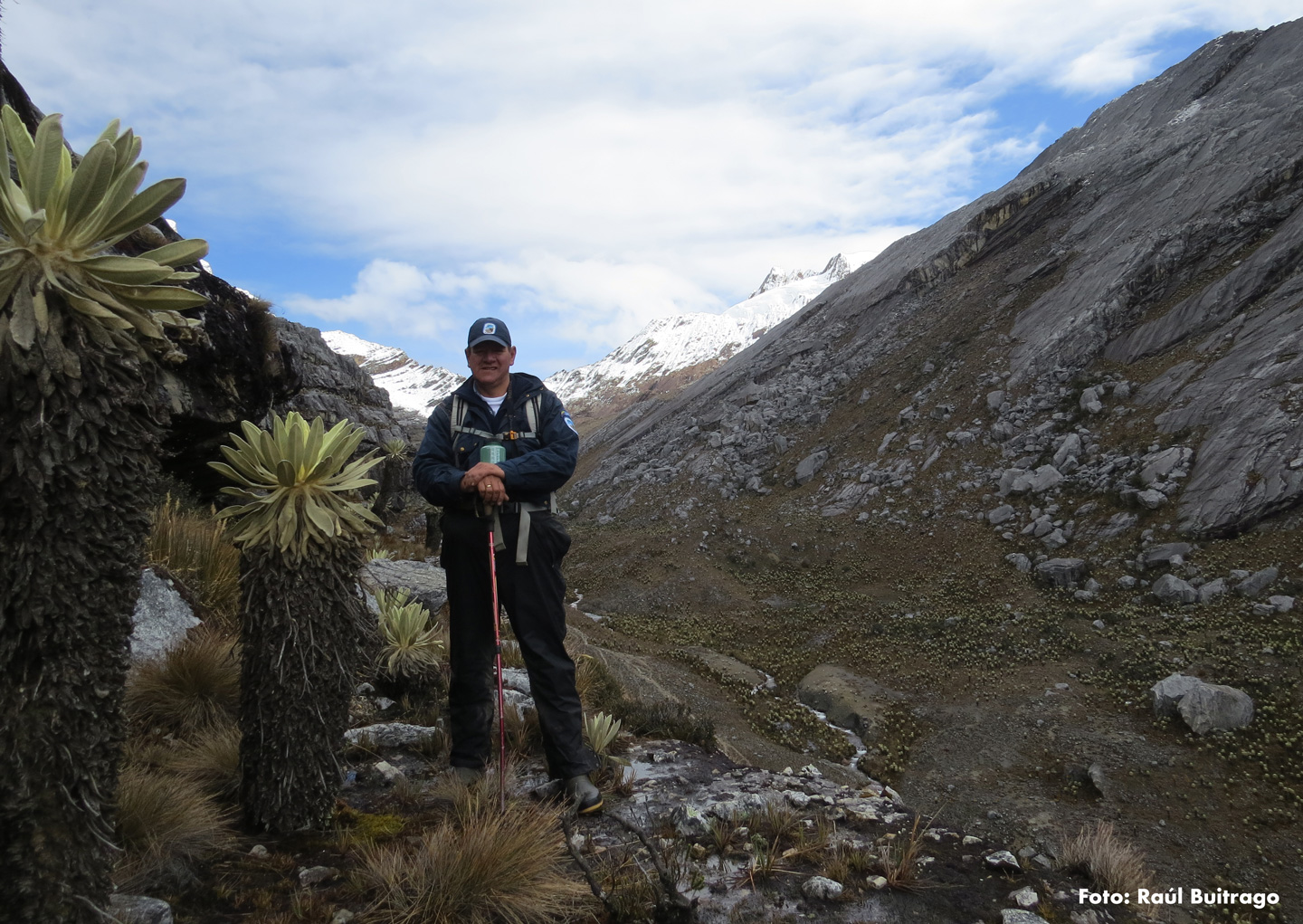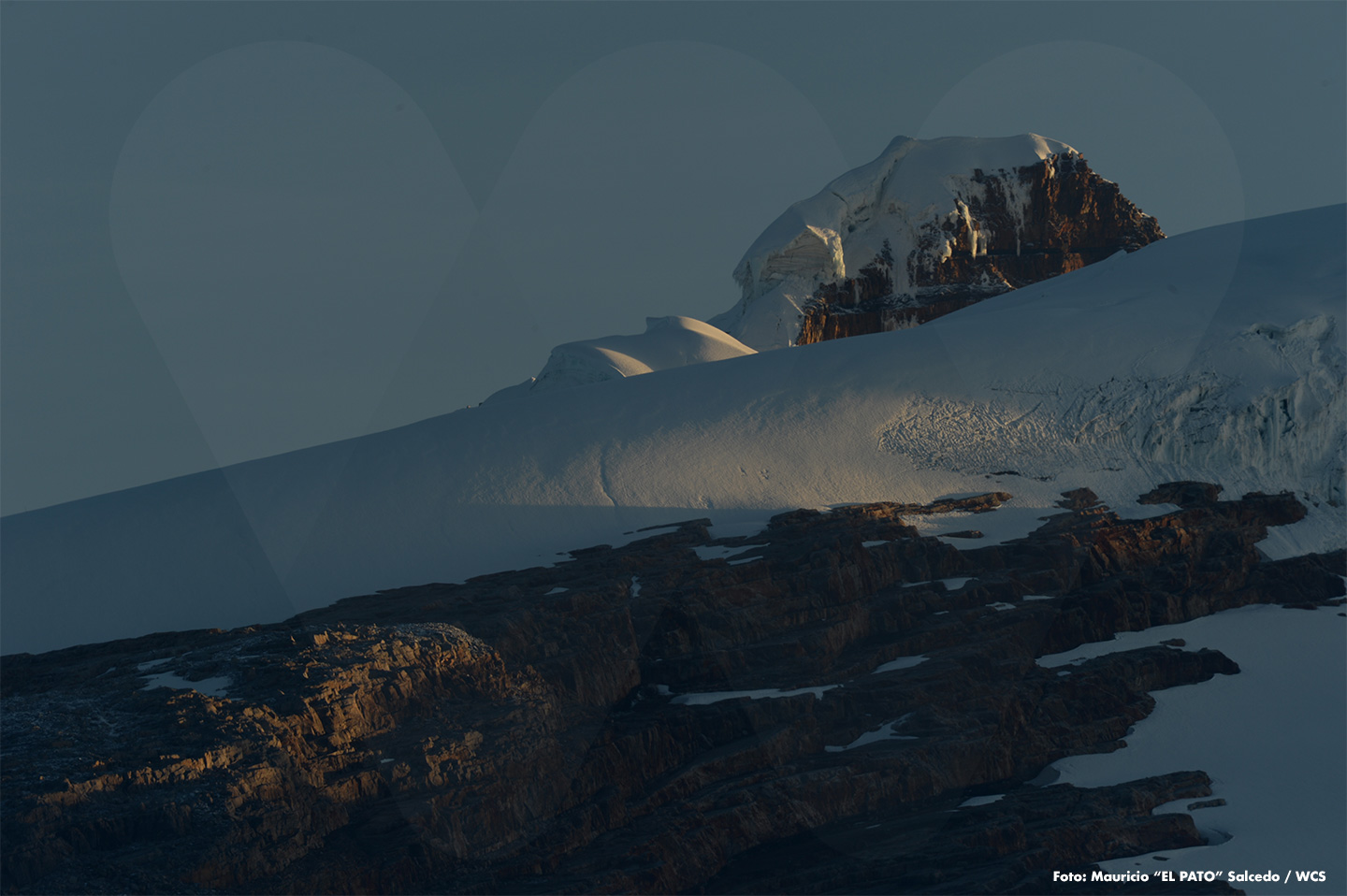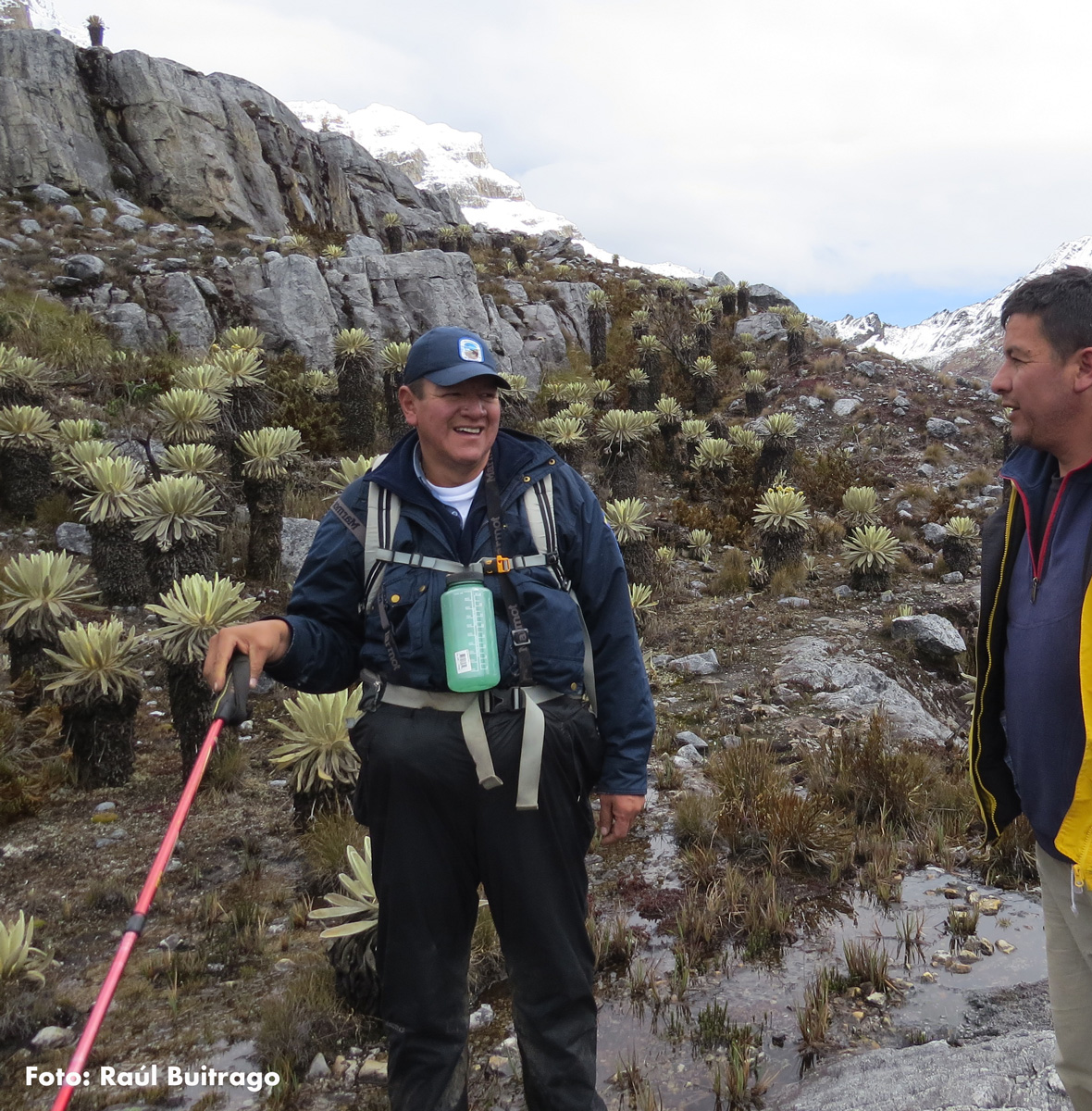Last November 9th, National Natural Parks celebrated the sixtieth anniversary of the first national protected area created in Colombia. We are participating in this commemoration by highlighting the work of one of its most experienced park rangers: Raúl Buitrago. Raul has worked uninterruptedly for 31 years in El Cocuy, a way of underscoring the courage of the more than 1200 men and women who, like him, protect our biological resources in the 59 national areas administered by the entity. It is more than half a century following the mission of supporting and preserving the most valued and representative national biodiversity.

Raúl Buitrago's destiny was marked. Sometimes, for many people, life is full of uncertainties, of changes, of few convictions, because the path is not always clear. But, for him, the die was cast. His star always guided him to become a park ranger. Raúl never looked for this life. National Natural Parks arrived at his house, at his room almost, to find him.
“It all happened in September of 1989. At that time, National Parks installed its administrative office for this region in one of the rooms of my house, where I lived with my parents and brothers. And the official who came to town, Giselle Ochoa, was looking for two people to work with her”. And then the decisive connection happened; she asked Raúl to work at the El Cocuy Natural National Park. He, 20 years old, just out from school and without a job, accepted without objection.
Last November 9th was the sixtieth anniversary of the creation of National Natural Parks and Raúl completed 31 uninterrupted years of work in this protected zone which confirms him, without doubt, as an experienced park ranger and in one of Colombia's most renowned and charismatic conserved territories. Additionally, he represents the more than 1200 men and women who have the same mission: to guard the country’s biodiversity on behalf of an entity which has defended our most valued and representative biological resources, through 59 national areas, located throughout the nation.
Sacred territory
El Cocuy National Park was created in 1977 by the Instituto Nacional de los Recursos Naturales y del Ambiente - Inderena (National Institute of Natural Resources and Environment), no longer in operation. It covers 306.000 hectares distributed among Boyacá, Casanare and Arauca that include the Cocuy, Güicán and Chita snow-capped mountains. It has the highest peaks (over 5.000 meters above sea level), of the Eastern Andes Mountain Range, parts of paramo where patches of frailejones, many over two meters high, stand out, strips of basal jungle, Andean vegetation and 150 lakes, in a sacred territory for the Uwa indigenous people.
Raúl knows this protected territory like the palm of his hand. He says he is not very enthusiast about escalating walls of rock or ice, such as those seen climbing up to the most famous mountain of the park, the Ritacuba Blanco, 5.330 meters above sea level (the third highest peak in the country after the twin peaks of the Sierra Nevada de Santa Marta). He says trekking has always been his passion and he has roamed the territory ever since he started his work with the park, to speak with the people, settle conflicts in connection with water concessions and share environmental education or only with exploring purposes.

“We had a group called ‘Los Jungla’, with which we made expeditions between the municipalities of El Cocuy and Tame (Arauca), reaching 350 meters above sea level. There was a trail, which no longer exists, that we would follow up to ten days. We would also circle the Sierra with the company, among others, of Roberto Ariano, a Colombian who has participated in expeditions to the Everest. And we walked all the way to Concepción (Santander) and Samoré and Gibraltar (Norte de Santander), through one of the best conserved areas of the park.
These treks give Raúl authority, as direct witness, to diagnose a landscape problem that is evident upon arrival at El Cocuy: the retreat of its glaciers due to climate change. Raúl says that, when he started working, he could find snow with a two hour walk. Today, in order to touch snow, three additional trekking hours are needed. “Places and peaks such as El Púlpito del Diablo, the Ritacuba Negro and Ritacuba Blanco, Pan de Azúcar, Cóncavo or Sirara, that are between 5.000 and 5.300 meters above sea level, will be lost as snow-peaked mountains in approximately two decades unless an inverse climatic phenomenon to the one affecting them occurs.”
He prefers not to talk much about this subject, even though he has worked jointly with the Instituto de Hidrología, Meteorología y Estudios Ambientales – Ideam (Institution of Hydrology, Meteorology and Environmental Studies) in mensuration and monitoring exercises.
He died for a ‘selfie’
He changes topics and refers to his favorite site, which he has also trekked dozens of times, the Laguna de la Plaza, the most beautiful place of the National Park, he explains. He says: “The expanse of the water mirror, surrounded by the hills La Plaza, Pan de Azúcar, Toti, Portales, Diamante, among others, make this landscape an unrivalled place”. Today, tourists can no longer visit it.
He explains that walking there, and in general in very high altitudes, is not easy: it requires endurance, a good control of physical capacity and enormous patience. The spectacularity of La Plaza has been a double-edged sword because, at a time, it attracted hundreds of tourists and, in some cases, dozens of accidents. Many visitors had to be rescued or assisted. Others died due to excessive treks or taking risks to challenge the snow.
“I have always liked to ‘rescue-walk’ ”, he says, referring to those journeys of 8 or 10 days looking for lost trekkers to take them back to a safe place. Many circumstances can trigger these incidents: solitary treks or treks through unknown places or excess confidence that sometimes hinders the determination of danger such as cracks in a glacier, or not paying attention to a pulmonary edema caused by altitude.
“Some people think that trekking the area is the same as going out of their house, as walking to the corner. Many incidents that I have seen were produced because young people do not consider distances, do not take climate into account. Sometimes it rains suddenly. Or they stay until night at the mountain. That’s when problems start.”
Some people enter the park without a permit. “One time a young man sneaked in, got lost and we searched for him for eight days. He went up to the snow and, when he was taking a ‘selfie’, he fell into an abyss. Fortunately, his cell phone fell in a visible place. Checking through the photos he had taken, we were able to find his body.”
“Battling it out”
The stories told by ‘Pereira’, as most of his friends know Raúl - a nickname his father gave him inspired in the actor of a soap opera called Raúl Pereira - sometimes combine the ecstasy of being in a privileged place, where he has seen flocks of five or eight condors, deer and groups of pumas or Andean bears, with a life that is not always free from difficulties,.

All the same, the fact that his purpose as a professional, teamed with his fellow workers, is perceived and can be validated with results, encourages him. Among them, the disappearance of livestock herding in some areas of the Laguna de la Plaza and zones of the park that are part of the municipality of Chiscas (Boyacá) where, additionally, work has been done with the communities and the ‘parameros’ (people living in the paramo) to restrain the proliferation of fires and damage to flora.
Without disowning the work he has supported to reach agreements with the natives for them to continue allowing the arrival of tourists and trekking of the three trails that today, are finally the official ones: Ritacuba, Laguna Grande de la Sierra and Lagunillas-Púlpito.
It is usual that many park rangers, with time and after working for many years at a certain reserve, want to go to a different place, know new sites or accumulate knowledge in Colombian regions where National Natural Parks have presence. This has not been Raúl’s case. He says he will never leave El Cocuy. There, he explains, he has everything that makes him happy, from his family (one of his sons is a mountain guide) to the most beautiful place of Colombia, as he dares to claim. “I will stay here, I will always be here, battling it out”.
